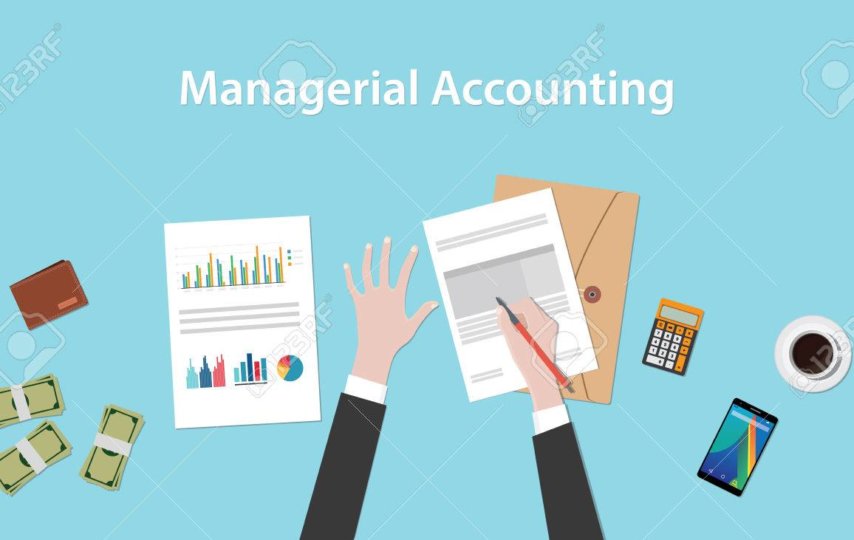Managerial accounting is the application of professional knowledge that is involved in the preparation of accounting data in such a way to assist management in the formulation of policies and the operation’s planning and control of its undertakings. It includes the concept and technique that is required for effective planning for selecting alternative business actions and for control by evaluating and interpreting the business performances.
Managerial accounting is also called as management accounting which includes a different topic that is also included in the cost accounting.
Some of the examples of managerial accounting topics are discussed below.
Job Order Costing:
“Cost bookkeeping is foe number one of profitability”- Mike an expert consultant at Myassignmenthelp. It is a system for allocating and collecting the cost of manufacturing of a single unit of output. Job order costing is used when a number of items produced are adequately different from each other, and each of them has a significant cost. For example, an organisation changes trucks to meet the special needs of the customers, the firm that constructs custom-designed buildings, and so on.
Operational Budgeting:
It is an estimation of the revenues and expenses that are expected for one or more than one future periods. The internal management team prepares the operational budget before the starting of the year and displays expected activity levels for the whole year.
Process Costing:
It describes the method for gathering and assigning manufacturing costs to the units produced. A system of process costing is used when nearly the same units are provided as its mass production. Process costing is also called an accounting methodologically that traces, accumulates and assigns all costs involved during the process of manufacturing.
Standard Costing and Variance Analysis:
Standard costing is an accounting system that is used by some of the manufacturers to detect the variances amongst the actual costs of the products produced and the cost that actually should have occurred for the actual products produced. Variance analysis is the quantitative identification of the difference between the planned and the actual behaviour.
Capital Budgeting:
According to Sophia an analyst at Essaycritics, “Capital planning diminishes the expenses just as acquires changes the benefit of the organization. It stays away from over or under ventures. Legitimate arranging and investigation of the tasks help over the long haul.”- It is a procedure that is used by the organisations for evaluating and ranking the potential capital expenses or investments which are essential in aggregate. For example, acquiring new equipment, rebuilding existing equipment, and so on.
Activity-Based Costing:
It is a technique that is used within the company to identify the activities performed within the organisation and assigns a specific cost to perform each activity to entire products and services. ABC method works best for the complex environments where there is a number of equipment, product and tangled procedures.
Ratio Analysis:
This is a quantitative method to analyse the financial performance and position of the company. Ratio analysis involves five basic types of ratios that is profitability, liquidity, activity, debt and market. This is better for the external users, bu`t the management uses this method to find the actual performance of the company on which it is moving and accordingly take some effective decisions for the betterment of the company.
Cost Behavior and Cost Volume Profit Analysis:
It is necessary to understand the nature of cost (fixed or variable) to understand the cost behaviour. To be able to forecast future prices for planning and decision making, it is essential to know how costs behave in context with activity levels. Cost volume profit analysis method inspects the interrelationships amongst cost, volume and profits at different activity levels to support managers in their decision making.
Let’s move on to what is included in managerial accounting?
Managerial accounting includes much information about cost of sales, fixed and variable cost.
The types of managerial accounting are discussed below-
1. Production costing and valuation
The production cost mainly involved in the production of the goods. The production cost includes variable, fixed, direct or indirect costs. Cost accounting is used to measure different types of cost. The accountants of managerial accounting calculate the overhead charges and allocate the expenses for the production of the goods. Marginal costing has a notable impact on the cost of the product.
2. Analysis of cash flow
The managerial accountant’s analyses the cash flow of the company. This helps them to observe the impact of cash in business decisions. Most of the organisations follow the accrual basis to record their financial information, which helps them to provide an accurate picture of the firm. The accountants of managerial accounting analyses the cash flow considering that the cash flow helped the business to make financial decisions.
3. Inventory turnover analysis
Inventory turnover analysis is based on how many times does the company has sold and replaced the inventory at a certain time. Inventory analysis helps the businesses to make better decisions on pricing, marketing and purchase of inventory. The managerial accountant can assist the business to identify the carrying cost of inventory. The managerial accountants can help the business to estimate whether they are efficiently carrying the storage cost or not.
4. Constraint analysis
Managerial accounting also includes analysis of the constraint within the production or sales line. The constraint analysis can help to determine the impact of the obstacle in the revenue, profit or cost of the firm. The managers of the firm can observe the analysis to determine and make a decision regarding the changes that are needed to be implemented in the organisation. Additionally, this will help the efficiency of the production and sales of the company.
5. Financial Leverage metrics
The managerial accountants can evaluate the amount of borrowed capital of the business by analysing the balance sheet. The balance sheet also helps the organisation by providing information about debts and equity mix. The management should review the ratios of the organisation that will help them in decision-making.
6. Accounts Receivable (AR) management
The accounts receivable has a significant impact on the company. The managerial accountant can determine the credit risks of the customers by analysing the accounts receivable. The management should identify that if any customer is paying late routinely and make decisions accordingly.
7. Budgeting, Trend analysis and Forecasting
Budgets are helpful to estimate the future position of the company. Managerial accountants utilise the performance reports of the company based on the budget. The positive and negative reports should be observed from the budget to the changes in the upcoming year. Managerial accounting also reviews the trend analysis of the company to review the information about the expenses and variances. Further, this helps the management accountants to utilise the information and use it the future financial reports.



